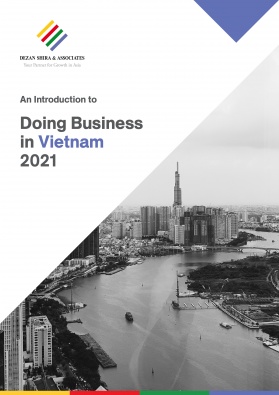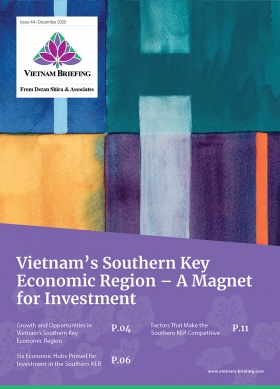Mergers and Acquisitions in Vietnam: An Introduction to Key Guidelines and Processes
The Vietnamese government has streamlined the merger and acquisition (M&A) process to encourage investment in new sectors of the economy. And for foreign investors that see establishing a business in Vietnam as too cumbersome, the M&A route provides a unique solution to many obstacles.
With an M&A, investors can enjoy preexisting access to consumers, locations, and distribution channels. This local knowledge can prove critical to successful operations within Vietnam’s vibrant but rapidly changing investment environment.It’s an increasingly popular investment route. M&A deals hit US$9.9 billion in 2018, according to the Vietnam Association of Foreign Invested Enterprises. While significant, it did not outpace M&A deals in 2017. Still, M&A deals are expected to pick up in 2019, particularly in the retail sector.
Most recently, VinCommerce, part of the local conglomerate Vingroup, acquired Shop&Go, a 24/7 convenience store, while South Korea’s GS25 store acquired Zakka Mart.
Deals like these should support the forecast 14 percent growth rate for M&A value this year. The General Statistics Office (GSO) projects total M&A revenue to reach US$484 billion by 2025. This growth will go beyond retail, and into real estate, renewable energy, and technology, among other sectors.
However, to successfully carry out M&As within Vietnam, it is important to recognize the legal foundation for M&As and understand the procedures and restrictions associated with acquisitions.
The legal foundation for M&As
There is no unified legislation that governs M&As in Vietnam. M&As are governed primarily by two laws namely the Law on Enterprises and the Law on Investment. The Law on Competition and the Law on Securities are also used to govern M&As but to a lesser extent.
More specifically, M&As within Vietnam is largely regulated by the Law on Enterprise No. 68-2014-QH13 and Law on Investment No. 67-2014-QH13. We describe the main articles directly below.
- The Law on Enterprise No. 68-2014-QH13
- Article 18 explains the rights of companies and individuals to establish an enterprise, purchase shares, and supply capital. There are some restrictions on who can participate, such as state officials, minors, and those prosecuted for criminal acts.
- Article 195dictates the process and limitations of a merger. In the case of a possible conflict with the Law on Competition, a legal representative of the company must settle the issue with the administrative agency for competition. Once the merge has been completed, the newly formed company must submit notice to the national enterprise registration database.
- The Law on Investment No. 67-2014-QH13
- Article 25establishes foreign investor’s rights to contribute capital and buy capital or shares.
- Article 26spells out the procedure to contribute capital and buy capital or shares. The application for registration must be submitted to the Service of Planning and Investment for approval.
- Law on Securities
- This law governs the acquisition of shares in a public company including public tender offers.
- Authorities responsible for enforcing the law are State Securities Commission (SSC), Vietnam Securities Depository, and the MPI.
- Law on Competition
- Vietnam recently passed the Competition Law, which took effect in July 2019.
- The new law expands the scope of instances where a merger is required including total assets, revenue, transaction value, or market share of the participating party. It also proposes thresholds such as the participating party having assets and revenue of US $43 million.
- The law also introduces a 30-day preliminary review where the competition authority decides whether the transaction can proceed, or an official merger evaluation is required.
Restrictions for M&As
Investors should also decide on whether the process will be a merger or an acquisition. A merger is when two companies join to form one company by transferring assets, rights, obligations and interests to the merged company and therefore terminating the merging companies.
Acquisitions require a change in ownership and are typically in the form of existing share purchases or new shares but also involve acquiring assets. For non-public companies, liability mainly stems from the failure to meet the provisions set out in the agreement.
One of the advantages of executing a merger is that there are few restrictions. They are also an ideal option for investors that are time-constrained and without needing to step up a company.
The main control imposed by governing officials is on the size of the merged company. In this context, it is important to determine what percentage of market share the newly merged company will hold.
If it will possess more than 50 percent, the merger will be prohibited. If it is between 30 and 50 percent, a legal representative of the company must first obtain permission from the administrative agency for competition before implementing the merger.
In the case of capital and shares, investors must comply with the laws on securities for public and listed companies. If a company has been converted or equitized, it has to follow all regulations applicable to conversion and equitization. Lastly, the nature of the investment should conform to international agreements that Vietnam is part of.
For acquisitions – getting information about the targeted company can still be challenging in Vietnam as the targeted company is not required to disclose information to a buyer. This can lead to larger wait times while the acquiring company does its legal and financial due diligence.
In addition, certain sectors such as banking, financial, and insurance services are governed by specific regulations. If an acquiring company wants to acquire a company in these sectors it will be subject to additional regulations as per local law.
How to approach a merger step-by-step
There are three basic types of mergers: a merger of two foreign-owned companies; the merger of two local companies; and the merger of a locally-owned company with a foreign-owned one.
In addition, a merger contract is always necessary, which determines ownership after the merger. Once the merger contract has been completed, procedures for the merger takes approximately 30 days.
While executing a merger can become a detailed and daunting task, the actual steps required are not extensive. The government has worked diligently to make the process appealing and straightforward to encourage foreign investment. The following are the recommended steps for companies seeking to pursue investment in this manner:
- Identify the feasibility and legality of the merger and consider the structure of the newly merged company.
- Sign a non-disclosure agreement to gain further information about the company’s operations, finances, etc. With these details, the investor must administer due diligence and identify whether the company is sound.
- The two parties now have to negotiate the terms and conditions of the merger, creating the contract and a draft of the charter. The contract must detail the parties involved and the specifics and timeline of the merger. Depending on the nature of the plan, it is advisable to obtain preliminary permission from the appropriate authorities. The company is required to notify all employees of the merger and provide creditors with a copy of the contract within 15 days.
- Submit the application to the licensing authority to receive an investment certificate or certificate of enterprise registration. The application will require a merger contract and a resolution and minutes of the merged company meeting and the merging companies’ meetings where the contract was approved.
- Based on the type of merger, certain post-merger actions may be required, such as opening an escrow account. The government will update the status of the company in the national enterprise registration database.
Capital contribution and purchasing shares
- Submit an application for registration to the Ministry of Planning and Investment(MPI), which must contain details of the investment and either the passport or ID card of an individual or certificate of establishment of an organization.
- Within 15 days of receipt, the investor will receive either approval or denial of the contribution/purchase.
How to approach an acquisition step-by-step
For acquisitions, the process depends on the type of ownership.
For example, an acquisition of a single-member limited liability company (LLC) by another single-member LLC involving foreign-owned companies does not involve any special procedures. There are, however, some additional steps:
- Submit transfer of capital contribution documents to the MPI.
- The MPI can take up to 15 days to process. Once reviewed, they will issue an approval letter, ask for further information, or will ask to make amendments.
- After receiving the approval letter, the investors will begin steps involved in changing the owner.
For a single-member LLC acquisition of a multiple-member LLC, all company documents will need to be changed. For example:
- Update the number of members including details of ownership.
- Submit documents related to forming the member’s council – the highest decision making body, and the inspection committee – the main supervisory board of the management structure.
- Any other documents related to tax, business registration, and charter capital.
It is also important to note that a multiple-member LLC is limited to 50 individuals or organizations or a combination of both. This entire process can take up to 40 days.
For a locally owned company acquiring a foreign-owned company, a different set of rules apply:
- The acquisition process is the same if a foreign investor wants to acquire a local company provided the World Trade Organization(WTO) has permitted an acquisition in that particular business sector.
- A ministry level approval is required if there is no WTO or local commitment for the particular business sector. This process can take up to three months.
Enterprise and investment laws come in effect January 2021 – plan ahead
Vietnam’s National Assembly passed the revised Law on Enterprises and Law on Investment, which aims to make doing business in Vietnam less cumbersome. Both of these laws take effect on January 1, 2021, and are timely given the passage of new free trade agreements such as the EVFTA and the CPTPP, as well as Vietnam, ranking as the world’s second M&A attractive market as per Euromonitor International.
The amended Law on Investment provides updates on conditional business lines, investment incentives, support mechanisms while removing administrative approval for certain types of investment projects.
The law removes the need for an M&A approval if the transaction does not result in an increase of foreign investors’ ownership ratio in the target company. M&A transactions that result in an increase of foreign investors’ ownership ratio in the target company and exceed the 50 percent of shares or charter capital would be subject to an M&A approval.
The revised Law on Enterprises also offers protection of minority shareholders in a company.
The new laws will likely ensure that M&A activity remains strong in Vietnam. These changes demonstrate the government’s ongoing development to simplify the administrative procedures making it easier for businesses keen to enter the Vietnamese market.
This coupled with the government’s push to divest a number of state-owned enterprises (SOEs) bodes well for foreign investors. As of 2019, only 35 out of 127 SOEs were divested and we can expect further strong M&A activity going by the latest trends.
Regardless, M&As are a complex and detail-oriented task.
While this article provides an overview of the process, investors should carry out stringent due diligence checks and have an investment plan that is in full compliance with Vietnamese regulations.
This article was first published in July 2019 in Vietnam Briefing and has been updated to include the latest developments.
About Us
ASEAN Briefing is produced by Dezan Shira & Associates. The firm assists foreign investors throughout Asia and maintains offices throughout ASEAN, including in Singapore, Hanoi, Ho Chi Minh City, and Da Nang in Vietnam in addition to Batam and Jakarta, in Indonesia. We also have partner firms in Malaysia, Bangladesh, the Philippines, and Thailand as well as our practices in China and India. Please contact us at asia@dezshira.com or visit our website at www.dezshira.com.
- Previous Article Bank Indonesia Issues Regulation on Payment Systems
- Next Article A Guide to Intellectual Property in Vietnam









